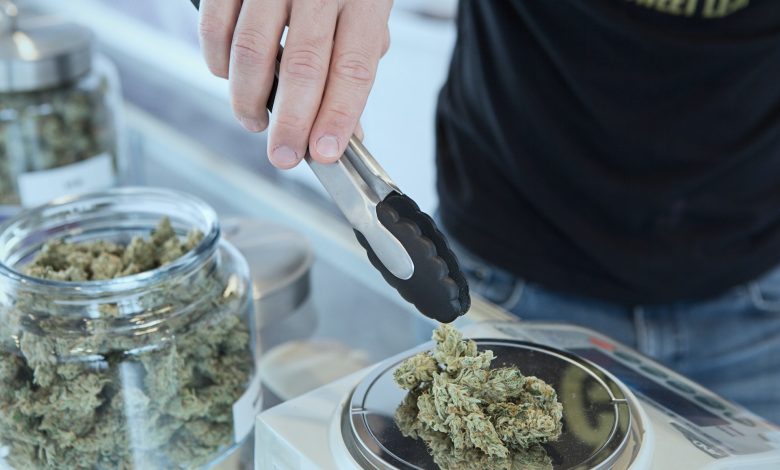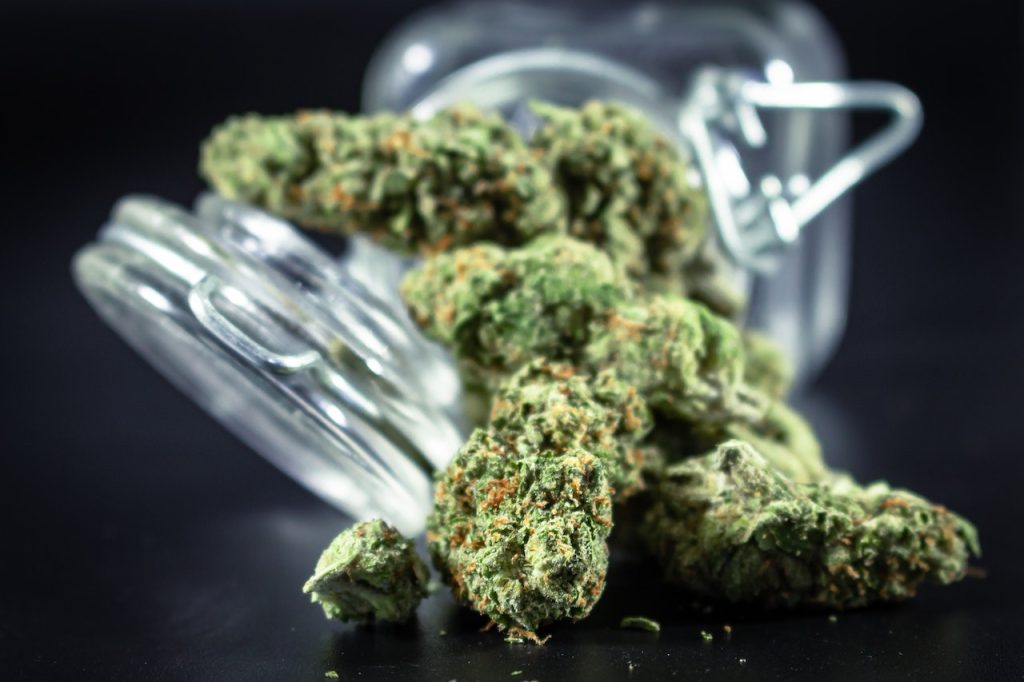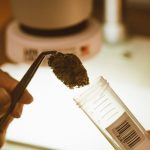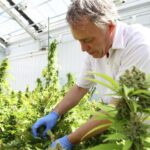The Evolution of Cannabis Processing Machinery: A Detailed Overview

Did you know the global cannabis market is projected to reach $90.4 billion by 2026? The global cannabis market has indeed been significantly influenced by the growing interest and recognition of its health-related applications. Over the past decade, there has been a substantial shift in attitudes toward cannabis, with a growing body of research highlighting its potential therapeutic benefits.
One of the key factors driving the cannabis market’s growth is the increasing acceptance and legalization of medical cannabis in various countries. Medical cannabis is being used to treat a wide range of health conditions, including chronic pain, epilepsy, multiple sclerosis, nausea and vomiting associated with chemotherapy, and symptoms of certain mental health disorders.
As the industry continues to grow at an unprecedented rate, it’s essential to take a closer look at the machinery and technologies that have played a crucial role in shaping how cannabis is produced and consumed today.
From the early days of manual processing to the cutting-edge equipment of the present day, the evolution of cannabis processing machinery has been remarkable.
In this comprehensive overview, you’ll journey through the fascinating history of cannabis production, exploring the various stages of automation and the advances in extraction techniques.
Together, we’ll delve into the evolution of cannabis processing technology, from its early roots to the modern era of innovation.
Discover how Mobius and other industry pioneers have played a pivotal role in revolutionizing the extraction process, optimizing efficiency, and achieving higher quality standards. Join us as we uncover the remarkable advancements and milestones that have shaped the cannabis industry into what it is today.
You’ll also delve into the innovations in edible and infused product manufacturing and the essential quality control and testing equipment that ensures a safe and consistent product.
As you examine the impact of legalization on machinery development, you’ll gain valuable insights into the future of cannabis processing technology and the growing demand for eco-friendly and sustainable solutions.
So buckle up and get ready to discover the fascinating world of cannabis processing machinery evolution.
A Brief History of Cannabis Production
Throughout history, the methods and techniques for producing cannabis have come a long way, paving the way for a more efficient and refined process.
In the early days, cannabis production was predominantly manual, with laborers separating the plant’s valuable parts by hand. This labor-intensive process was not only time-consuming but also led to inconsistencies in the final product, as the quality of the end product depended on the skill and experience of the worker.
As the demand for cannabis increased, people began experimenting with various tools and techniques to improve the efficiency of the production process. Innovations such as sieving and sifting were introduced, allowing for separating the resinous trichomes from the plant matter to create hashish and other concentrated products.
These early advancements proved to be a significant step forward, but there was still much room for improvement in automation and standardization.
The industrial revolution, with its emphasis on mechanization, played a pivotal role in transforming cannabis processing. This period saw the development of new machinery that could more effectively and consistently separate the valuable components of the cannabis plant.
With these initial developments in place, the stage was set for further innovations that would ultimately lead to the modern cannabis processing machinery we see today. As we delve deeper into the evolution of this machinery, we’ll now explore the early stages of automation, from hand to machine, and how they revolutionized cannabis production.
From Hand to Machine: The Early Stages of Automation
You might not believe it, but there was a time when automation in the world of marijuana was just a pipe dream! Early on, cannabis production was a labor-intensive process that relied heavily on manual labor.
From planting to harvesting and processing, workers spent hours upon hours tending to the plants, trimming buds, and separating the valuable components of the plant by hand. This method was not only time-consuming but also inefficient, as it left ample room for human error and inconsistencies in product quality.
As the demand for cannabis products grew, so did the need for more efficient and consistent production methods. Enter the early stages of automation.
In the 1970s and 1980s, the first cannabis processing machines emerged, primarily focusing on the trimming and separating aspects of production. These machines, often called ‘bud trimmers,’ were rudimentary by today’s standards but marked a significant step forward for the industry.
Producers could increase their output and maintain consistent product quality by automating these processes.
Fast forward to today, and the landscape of cannabis processing machinery has evolved dramatically. Technological advancements have led to the development of more sophisticated machines that can handle multiple aspects of production, from planting and harvesting to extraction and packaging.
This increased efficiency has allowed the industry to meet the growing demand for cannabis products while maintaining high quality and safety standards.
One notable example of a bud trimming machine that has become integral to modern cannabis production is the Mobius M108S Bud Trimmer. This advanced machine, designed specifically for the cannabis industry, takes the traditionally labor-intensive process of bud trimming and automates it. The M108S stands as a testament to how far cannabis production has come, offering high throughput, precise trimming, and excellent product quality, which is a far cry from the early days of manual labor. Its design enables producers to increase their output, standardize their product, and thus keep up with the escalating demands of the industry
As we delve into the evolution of cannabis processing machinery, we’ll explore the advances in extraction techniques that have revolutionized how we produce cannabis products today.
Advances in Extraction Techniques
Like a master chef perfecting their recipes, you’ve seen the world of cannabis extraction techniques transform and flourish, leading to an array of potent and pure products. As the industry evolves, so do the methods for extracting cannabinoids and terpenes from plant material.
These advances have increased efficiency and improved the quality and safety of the resulting products.
1. Supercritical CO2 extraction: This method uses carbon dioxide under high pressure and temperature to pull out the desired compounds from the plant material. It’s considered one of the cleanest and most efficient extraction methods, leading to a highly concentrated and pure end product.
2. Hydrocarbon extraction: In this process, solvents like butane or propane are used to dissolve the cannabinoids and terpenes from the plant material. It allows for a more selective extraction, resulting in higher potency and a more refined product. However, it requires careful handling and thorough solvent purging to ensure safety.
3. Ethanol extraction: This technique uses ethanol as a solvent to strip the plant material of its essential compounds. It’s a fast and efficient method, but it may also extract unwanted components, such as chlorophyll, leading to a darker and more bitter product.
As the cannabis industry grows, so does the demand for more refined and potent products. Extraction methods have become more precise, allowing manufacturers to target specific compounds and create products tailored to individual needs.
Pursuing purity and potency has led to new refinement and purification technologies, propelling the industry into unprecedented innovation and quality.
This progress sets the stage for even more advanced techniques and equipment, ensuring that the future of cannabis processing machinery remains bright and full of potential.
Refinement and Purification Technology
As we delve into refinement and purification technology, let’s explore the cutting-edge techniques and tools that elevate the quality of cannabis products to new heights.
These advancements improve the purity and potency of the final product and enhance the safety and consistency of cannabis consumption for medical and recreational users alike.
Key developments in refinement and purification include molecular distillation, chromatography, and solvent-free extraction methods.
Molecular distillation, also known as short-path or wiped-film distillation, is a process that separates the different cannabinoids and terpenes from the plant material by exploiting their unique boiling points.
This technique provides a higher purity and potency level than traditional methods, such as winterization, which involves using solvents to remove impurities.
Chromatography, on the other hand, is a powerful separation technique that isolates specific compounds for targeted applications. It is commonly used to separate minor cannabinoids, like cannabigerol (CBG) or cannabidivarin (CBDV), from the more abundant ones, such as delta-9-tetrahydrocannabinol (THC) and cannabidiol (CBD).
By doing so, manufacturers can develop more specialized and customizable consumer products.
Advancements in solvent-free extraction methods, such as supercritical CO2 and cold water extraction, are gaining popularity due to their environmentally friendly and non-toxic nature.
These methods eliminate the potential for harmful residual solvents in the final product and preserve the plant’s delicate terpene profile, which is responsible for the unique flavors and aromas of cannabis.
As the industry continues to evolve, it’s increasingly important that manufacturers prioritize the quality and safety of their products, and these innovative refinement and purification technologies are helping to achieve that.
With a better understanding of the transformation in processing machinery, we can now turn our attention to the innovations in edible and infused product manufacturing that enhance the overall experience for cannabis consumers.
Innovations in Edible and Infused Product Manufacturing
Innovations in edible and infused product manufacturing are truly transforming the way we enjoy cannabis, offering exciting new options for both medical and recreational users.
Gone are the days of homemade pot brownies as the only edible option; the market is now flooded with a wide range of products, such as gummies, beverages, chocolates, and even savory snacks.
These advancements are fueled by the development of sophisticated extraction and infusion methods that allow for precise dosing and consistent product quality.
Techniques like CO2 extraction, distillation, and nanoemulsion have made it possible to create edibles with specific cannabinoid profiles, targeting desired effects and accommodating various dietary restrictions.
As the demand for edibles and infused products increases, so does the need for efficient and reliable manufacturing processes to keep up with the rapidly growing market.
One notable innovation in this area is continuous flow production, which streamlines combining cannabis extracts with other ingredients.
Coupled with advanced mixing and homogenization techniques, this method ensures that the active compounds are evenly distributed throughout the product, providing consumers with a consistent and predictable experience.
Strict quality control measures, such as high-performance liquid chromatography (HPLC) and mass spectrometry, ensure that the final products are free of contaminants and accurately labeled with cannabinoid content.

While the edible and infused product market continues to thrive, it is crucial to recognize the importance of refining these manufacturing processes to maintain high quality and safety standards.
The industry’s commitment to ongoing innovation and improvement is evident in the wide range of products available and the increasing sophistication of the technologies used in their production.
As we look toward the future of cannabis processing machinery, the role of automation in packaging and labeling will undoubtedly become vital in maintaining this growth and ensuring that consumers can continue to enjoy a diverse selection of reliable and enjoyable cannabis products.
The role of automation in packaging and labeling
You might wonder how automation plays a crucial role in packaging and labeling, ensuring that the booming edible and infused product industry maintains its high standards and keeps up with consumer demand.
The key lies in incorporating modern technologies and equipment that streamline production while ensuring accuracy, efficiency, and safety.
As the cannabis industry continues to grow and evolve, businesses must implement automated packaging and labeling solutions to stay competitive and compliant with ever-changing regulations and consumer expectations.
1. Automated packaging machines: These machines can accurately weigh, fill, and seal various cannabis-infused products, from gummies to chocolates to capsules. This automation speeds up the production process and reduces the chances of human error and contamination, ultimately resulting in a more consistent and high-quality product.
2. Labeling equipment: Automated labeling systems can efficiently apply labels to a wide range of product packages, ensuring that all necessary information, such as product name, dosage, and expiration date, is clearly and accurately displayed. This also allows for quick and easy updates to labeling designs or information as regulations and industry standards evolve.
3. Robotics and conveyance systems: Using robotic arms and conveyor belts in packaging can increase efficiency and reduce labor costs. Without manual intervention, these systems can transport products through various packaging stages, such as filling, sealing, labeling, and boxing.
As the cannabis industry continues to innovate and expand, the role of automation in packaging and labeling will only become more significant.
By embracing these technological advancements, businesses can meet consumer demand and regulatory requirements and improve their products’ overall quality and safety.
The importance of automation in the cannabis industry doesn’t stop at packaging and labeling, though. To guarantee top-notch products, businesses must invest in quality control and testing equipment.
Quality Control and Testing Equipment
Businesses in the edible and infused product industry must invest in quality control and testing equipment, ensuring their products meet the highest standards and regulations. As the cannabis industry continues to evolve, the demand for accurate and reliable testing methods has never increased.
To maintain consumer trust and guarantee the safety and efficacy of their products, companies must have access to cutting-edge testing technology and equipment. Several key aspects of quality control include potency testing, contamination screening, and terpene profiling.
Potency testing equipment, such as high-performance liquid chromatography (HPLC) and gas chromatography (GC) machines, is vital for determining the levels of cannabinoids like THC and CBD in the final product.
Contamination screening tools, like microbial detection systems and pesticide residue analyzers, ensure products are free from harmful substances and meet regulatory requirements.
Terpene profiling equipment allows manufacturers to analyze and quantify the terpenes present in their products, providing valuable information for product development and standardization. As the cannabis industry continues to expand and mature, the importance of reliable and accurate testing equipment cannot be overstated.
Ensuring consistent, high-quality products is essential for consumer safety and the industry’s overall reputation. With the increasing impact of legalization on machinery development, we can expect to see even more advanced testing technologies emerge, further enhancing the quality control capabilities of cannabis processing machinery.
The Impact of Legalization on Machinery Development
As more regions embrace legalization, you’ll witness a surge in the development of cutting-edge machinery tailored to meet the unique needs and demands of the cannabis industry. This growth is primarily fueled by the need for efficient, consistent, and scalable production.
The impact of legalization on machinery development is evident in several key areas, making it easier for cannabis businesses to thrive and comply with new regulations.
1. Automation: The increasing demand for cannabis products has spurred the development of automated machinery designed to streamline processes, reduce human error, and increase throughput. Examples include automated trimming machines, extraction equipment, and packaging solutions.
2. Precision: As the industry matures, precision becomes paramount in producing high-quality, consistent products. This has led to the development of advanced machinery capable of precise dosing, temperature control, and pressure regulation in extraction processes.
3. Customization: Cannabis businesses now have access to a wider range of specialized machinery designed for various applications, allowing them to tailor their production processes to their specific needs and preferences.
4. Compliance: Legalization has many regulations requiring strict adherence to quality control, accurate labeling, and traceability. In response, machinery manufacturers have developed equipment to help businesses meet these requirements, such as testing devices and software solutions for tracking and reporting.
The impact of legalization on machinery development has not only created a more robust and efficient industry but also allowed for innovation and continuous improvement in the cannabis sector.
As the market continues to expand and evolve, so will the technology and equipment supporting it. The future of cannabis processing technology promises exciting advancements and breakthroughs that will further revolutionize how we cultivate, process, and consume cannabis products.
The Future of cannabis processing technology
Ironically, we haven’t even scratched the surface of the incredible advancements that will shape the future of pot production technology.
As the cannabis industry grows, experts predict a skyrocketing demand for more efficient and automated processing machinery. This means manufacturers must develop new techniques and technologies to keep up with the ever-changing landscape of cannabis production.
Innovation in cannabis processing technology will likely focus on increasing efficiency, reducing waste, and improving the overall quality of the final product. For instance, we can expect more advanced extraction methods that use less energy, produce higher yields, and minimize the loss of valuable cannabinoids.
Moreover, automation will play a significant role in the future, allowing for more precise and consistent processing, ultimately leading to better quality control and reduced human error.
As the cannabis industry evolves, a growing demand for eco-friendly and sustainable solutions will likely lead to the development of biodegradable packaging, energy-efficient equipment, and environmentally conscious farming practices.
With a strong emphasis on sustainability, the future of cannabis processing technology will pave the way for a greener, more responsible industry ready to meet the needs of an ever-expanding market.
The Growing Demand for Eco-Friendly and Sustainable Solutions
With the burgeoning cannabis market comes an increasing need for eco-friendly and sustainable solutions, driving innovation in areas such as biodegradable packaging, energy-efficient equipment, and environmentally conscious farming practices.
As more countries and states legalize cannabis for medical and recreational use, the industry must find ways to meet this demand while minimizing its ecological footprint.
This challenge has led to the development of cutting-edge technologies and practices that benefit the environment and improve the quality and efficiency of cannabis production. One major area of focus in the quest for eco-friendly cannabis processing is the development of energy-efficient machinery.
Traditional cannabis processing methods often involve high-energy-consuming equipment, such as extraction machines, drying ovens, and lighting systems.
In response, manufacturers are creating more efficient machinery that uses less energy, reducing the industry’s overall carbon emissions.
For example, some extraction machines now use CO2 or ethanol as a solvent, which is more environmentally friendly and can result in a higher yield of cannabinoids.
Additionally, many growers turn to LED lighting as a more energy-efficient alternative to traditional high-pressure sodium and metal halide lights.
Another key aspect of sustainable cannabis processing is adopting environmentally conscious farming practices. This includes using organic and regenerative agricultural methods that promote soil health, conserve water, and reduce synthetic pesticides and fertilizers.
By implementing these practices, cannabis growers can create a more sustainable and eco-friendly industry while producing healthier, higher-quality consumer products.
Moreover, some companies are experimenting with closed-loop systems that recycle waste materials, reducing their environmental impact. As the cannabis industry evolves, integrating sustainable solutions will become increasingly important in ensuring its long-term success and environmental responsibility.
Conclusion
You’ve seen how far cannabis processing machinery has come, and it’s clear that the industry is only moving forward. It’s exciting to witness the evolution of this technology, especially as it becomes more eco-friendly and sustainable.
Did you know the global legal marijuana market will reach $84 billion by 2028? That’s staggering growth, and it’s bound to impact the machinery and technology used in cannabis production significantly.
Keep an eye on this fascinating industry as it advances and diversifies.





